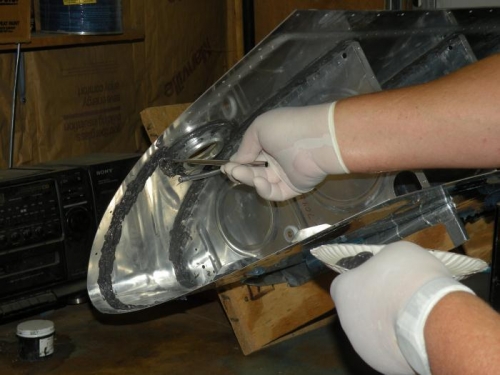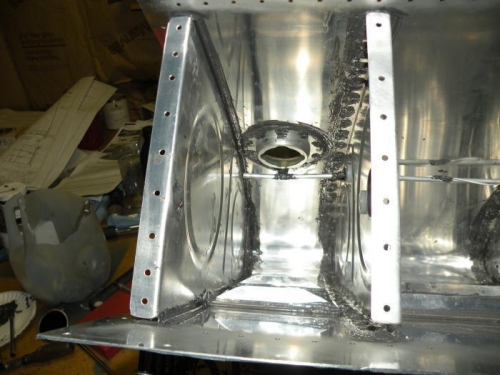I've now attained a new level in home buildership - applied pro seal (chem seal, actually) (whatever). I did the stiffeners and drains today, and it went fairly well. When assembling the tanks the first time for match drilling, it was impossible to get the ribs in using the cradle. I had to cleco the forward most hole of each rib with the skin peeled open and then wrap it up the ribs. Now that they are drilled and dimpled I think it is going to take the same technique to get the skin on, this time with pro seal to contend with. I suppose a trial fitting before applying sealer is called for. Couldn't be happier with the sealant gun, although I probably should have opted for the smaller tubes/holder. I found that a 50/5 gram mix of sealer did about 8 stiffeners, and a 70/7 did about 12, neither of which came close to filling half of a six ounce tube. I'm guessing about 100/10 for one tank's worth of ribs. Lots of other good advice found here was followed and appreciated - clothes, gloves, tongue depressors, MEK and ready to go cloths, etc. Wooden handled qtips (like those used for gun cleaning) helped get excess sealant off the threads of the drain, moistened with MEK. Goop worked well for hand cleaning (not that much was required...)



==dave==
Getting ready to order Fuse...



==dave==
Getting ready to order Fuse...










